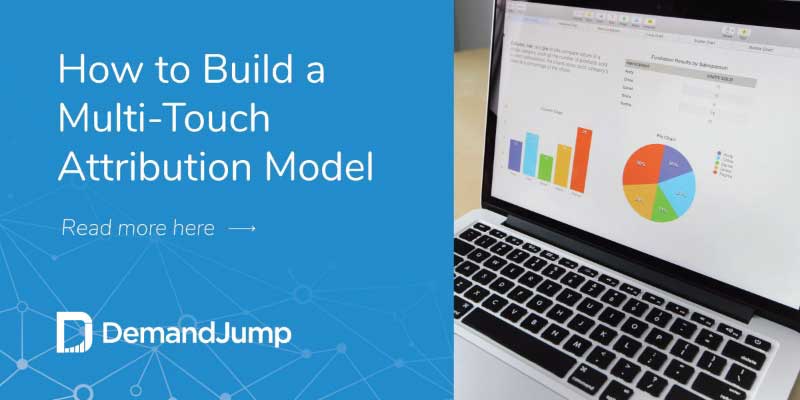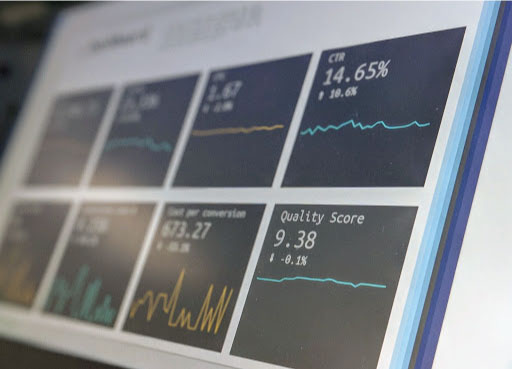How To Build a Multi-Touch Attribution Model
May 29, 2020 •DJ Team

A multi-touch attribution model recognizes the many interactions a consumer has with a business on different platforms along their customer journey and assigns the credit accordingly across those touchpoints. By assigning more weight to the channels that matter most to a business, marketers create a multi-touch attribution model to measure the effectiveness of a marketing strategy.
The modern buyer journey often spans many devices and platforms before customers convert. In order to map this journey and know which touchpoints resulted in an assisted conversion, marketers must rely on sophisticated attribution. So what is a multi-touch attribution model?
Multi-touch attribution refers to how businesses provide credit to each advertisement a consumer sees before completing a conversion action, whether that be a purchase, add to cart or map click (which shows intent to convert at a brick and mortar location). The attribution model used depends on the business strategy, but there are several common models.

What Are the Different Attribution Models?
Attribution models aren’t one size fits all. Many marketers combine different models to create a custom solution that works for their business. But in order to do so, it’s crucial to understand the most common attribution models.
First-click attribution
In first-click attribution, credit is given to a user’s first click or interaction with your business, regardless of which communication convinced them to convert. For example, a user sees a company’s ad when clicking through Instagram stories. They swipe up to learn more about your business, then go back to scrolling. Days later, they may receive a browse recovery email. After that, they may hear a radio advertisement. Then, they see a Google shopping ad, and finally convert. Even though they converted on Google, the credit would be given to the Instagram story.
Last-click attribution
This one explains itself. Using the same example above, but within this attribution model, Google Shopping ads would receive credit for the conversion, even though the other touchpoints also influenced a shopper’s decision.

When using first-click or last-click attribution, many marketing efforts remain left out of the puzzle. However, the multi-touch attribution models listed below help paint a more complete picture.
Linear attribution
A linear attribution model divides credit equally to each channel a buyer interacted with prior to converting. If a person interacted with five different advertisements before making a $100 purchase, each channel would report $20 revenue.
Position-based attribution
Similar to linear attribution, a position-based attribution model spreads credit across multiple touchpoints, but gives more weight to the first and last click. The first and last click each receive 40% credit, for example, while the touchpoints in between equally share the remaining 20%.
Time decay attribution
In the time decay model, touchpoints receive more credit the closer they are to a conversion. This helps determine and budget appropriately for the top, middle and bottom of the marketing funnel.

Data-driven attribution
For a more custom and informed approach, marketers throw attribution models that rely largely on assumptions out the window in favor of data-driven methods. This discerning attribution model uses data and leading-edge martech tools to understand customers’ behaviors when making purchasing decisions. With a clear view of the customer journey, data-driven attribution modeling uses technical algorithms to determine return on investment across channels.
How To Create a Multi-touch Attribution Model
When building a marketing attribution model, businesses must decide what data ranks most important to them. A data-driven approach provides the most insight, but certainly isn’t an out-of-the-box solution. This type of attribution requires strategic data analysis to weight what matters most.
DemandJump’s marketing attribution allows businesses to compare attribution models side-by-side as well as leverage AI with algorithmic attribution. With custom channel grouping, customizable reporting and cross-channel attribution, marketers can focus on the metrics that will provide positive ROI for their businesses. See just how easy it can be - try it yourself.
Featured Articles
Categories
- Attribution Tracking (13)
- Channel Optimization (11)
- Consumer Insights (68)
- Content Marketing (251)
- Data Science (8)
- Digital Marketing (6)
- Digital Transformation (26)
- Enterprise (10)
- Lead Generation (14)
- Market Intelligence (8)
- Marketing Analytics (39)
- Marketing Attribution (57)
- Marketing Management (153)
- Marketing Operations (86)
- Organic Search (222)
- Paid Search (52)
- Pillar-Based Marketing (63)
- Programmatic Advertising (9)
- SaaS Content (14)
- SaaS Marketing (29)
- Search Marketing (111)
- SEO Keyword Research (28)
- SEO Pillar (18)
- SEO Strategy (46)
- SMB (5)
- Website Content (12)


